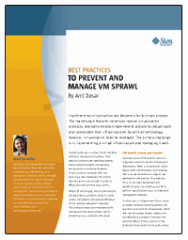I’ve always been curious about power consumption ever since the days before it was fashionable to think about this stuff. The poor, lonely, unemployed, set of servers in the data center used to bother me. Sure, they kept to themselves and rarely bothered anyone. But, no one had the guts to fire them, and they continued to generate heat, suck down power, and take up space (who hasn’t felt that way at some point?).
Of course, power frugality should start in the home. When looking into getting a new TV, I noticed that actual power consumption statistics were really hard to come by. Wattage ratings sometimes give a partial picture, but they’re far from real-world usage stats. So, taking the problem into my own hands (literally), I used a handy power consumption meter to measure how much juice each of these devices used. Below are details of my “test environment”. The information is just for one configuration of devices and is completely anecdotal. Still, I hope the information will be useful in some way and will inspire others to do the same types of tests.
The Test Environment
My current home theater setup is somewhat outdated (would-be thieves, please take note). It includes the following:
- A Microsoft Xbox 360: This is one of second generation units with a 120GB hard drive upgrade, obtained after a warranty replacement. It has been running without problems for several years now.
- Samsung LN52A630 TV: It’s a 52” LCD display; 120Hz refresh rate.
- ReplayTV 5500 Series DVR: A standard-definition hard driver-based DVR.
- Onkyo TX-SR507 Receiver: It’s in a standard 5.1 configuration.
- Yamaha NS-A1738 Speakers: These are single-amped and hooked up to the received. I also have a Polk center channel speaker and some small Polk Audio rear channels (yes, it’s a Frankenstein setup).
Power Consumption:The Results
The below tables provide details on instantaneous power consumption (in Watts) of each component in the setup. I have tried to show the various modes, settings, and operations of the different devices.
LCD TV Power Consumption
Below are the results for various modes of my Samsung LCD TV. The X360 uses component video cables, and the TV’s speakers are powered off (unless otherwise noted).
|
Mode / Configuration
|
Power (Watts)
|
|
Off
|
0
|
|
TV (Snow)
|
176
|
|
TV (Snow w/Menu)
|
226
|
|
Channel Search (Black Screen)
|
126
|
|
Digital TV
|
235
|
|
X360 (Dim)
|
112
|
|
X360 (On)
|
236
|
|
1080P Movie
|
236
|
|
Entertainment Mode: Sports
|
307
|
|
Entertainment Mode: Cinema
|
190
|
|
Entertainment Mode: Game
|
223
|
|
Dynamic Mode
|
303
|
|
Movie Mode
|
186
|
|
Energy Saving (Off)
|
228
|
|
Energy Saving (Low)
|
177
|
|
Energy Saving (Medium)
|
143
|
|
Energy Saving (High)
|
116
|
|
Energy Saving (Auto)
|
233
|
|
AutoMotion (Off)
|
227
|
|
AutoMotion (Low)
|
227
|
|
AutoMotion (Medium)
|
227
|
|
AutoMotion (High)
|
227
|
Xbox 360
Below is X360 power usage, based on various operations.
|
Mode / Configuration
|
Power (Watts)
|
|
Xbox360 (Dashboard)
|
248
|
|
Xbox360 (1080p movie)
|
243
|
|
Xbox360 (Halo Wars)
|
240
|
|
Xbox360 (Halo 3 – Disc)
|
265
|
Replay TV Power Consumption
As a note, the device never spins down the hard drive – it’s always running as long as the unit is plugged in.
|
Mode / Configuration
|
Power (Watts)
|
|
ReplayTV
|
47
|
|
ReplayTV + Receiver
|
97
|
|
ReplayTV + Receiver (No Audio)
|
50
|
Do It Yourself
Power usage meters such as the Kill-a-Watt are readily available and fairly inexpensive ($20 at NewEgg, at the time of this writing). The general process is to simply place the meter between a plug and a wall socket. Most of these meters will allow you to enter your cost-per-kWh rates to get estimates on daily, weekly, and annual costs.
Summary
Hopefully this information is somewhat interesting to readers of this blog. The fact remains that, at least in the United States, electricity costs are still far lower than they should be (based on the global impact of our consumption). That makes this information academic, for the most part – it’s unlikely to result in significant costs savings. Still, I somehow feel better with knowing how much power I’m burning when I’m being thoroughly destroyed in Halo online matches.
I’m also interested in seeing some other results, so please post them if you’ve got them!
 I recently wrote an online article for BizTech’s Small Business magazine, titled “5 Strategies for Moving Your Business to the Cloud“. Here’s the introduction to the topic:
I recently wrote an online article for BizTech’s Small Business magazine, titled “5 Strategies for Moving Your Business to the Cloud“. Here’s the introduction to the topic:




